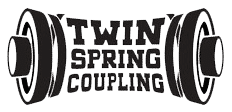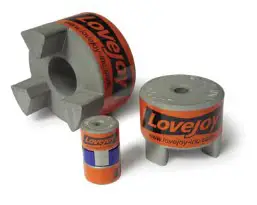Advantages and Disadvantages of Jaw Couplings in Industrial Applications
Table of Contents
Introduction
In the realm of industrial applications, jaw couplings have gained popularity for their ability to transmit torque while compensating for misalignment. These mechanical devices consist of two hubs connected by an elastomer element, which provides flexibility and dampens vibrations.
In this article, we will explore the advantages and disadvantages of jaw couplings, shedding light on their effectiveness and limitations in industrial settings.
Advantages of Jaw Couplings
- Misalignment Compensation: One of the key advantages of jaw couplings is their ability to accommodate angular, parallel, and axial misalignments between the driving and driven shafts. This feature reduces stress on machinery, improves operating efficiency, and extends the lifespan of components.
- Vibration Dampening: Jaw couplings employ an elastomer element that acts as a cushion, reducing the transmission of vibrations and shocks. This damping effect helps protect sensitive equipment, such as bearings, gears, and motors, from excessive wear and tear.
- High Torque Transmission: Jaw couplings are designed to transmit high torque loads, making them suitable for heavy-duty industrial applications. The elastomer element ensures a firm grip between the hubs, minimizing the risk of slippage and power loss.
- Easy Installation and Maintenance: Jaw couplings are relatively easy to install and require minimal maintenance. They are available in various sizes and configurations, allowing for quick replacements or adjustments during equipment setup or reconfiguration.
- Cost-Effective Solution: Compared to other coupling options, jaw couplings are often more cost-effective. Their simple design and widespread availability contribute to their affordability, making them a popular choice in industries that prioritize cost-efficiency.
Disadvantages of Jaw Couplings
- Limited Misalignment Capability: While jaw couplings can handle moderate misalignments, they have limitations when it comes to larger misalignment angles or complex misalignment conditions. In such cases, alternative coupling options like flexible disc or gear couplings may be more suitable.
- Lower Torsional Stiffness: Jaw couplings have lower torsional stiffness compared to some other coupling types. This can result in increased torsional backlash, which may be problematic in applications where precise motion control is required.
- Temperature and Chemical Sensitivity: The elastomer element in jaw couplings may be sensitive to high temperatures and exposure to certain chemicals. In environments with extreme temperatures or corrosive substances, alternative couplings with different materials may be necessary.
- Limited Speed Range: Jaw couplings are generally not recommended for high-speed applications. The elastomer material may experience wear and fatigue at elevated speeds, leading to reduced coupling performance and potential failure.
- Maintenance and Replacement: While jaw couplings are known for their ease of maintenance, the elastomer element may need periodic inspection and replacement due to wear over time. This can result in downtime and associated costs, especially in critical industrial processes.
Conclusion
Jaw couplings offer several advantages in industrial applications, including misalignment compensation, vibration dampening, high torque transmission, ease of installation, and cost-effectiveness. Brands include Lovejoy, Belden, Rexnord, Martin and TB Woods all make jaw couplings.
However, they also have limitations such as limited misalignment capability, lower torsional stiffness, temperature and chemical sensitivity, limited speed range, and the need for periodic maintenance and replacement. It is crucial to consider these factors when selecting a coupling solution for specific industrial requirements.
By understanding the advantages and disadvantages, engineers and industry professionals can make informed decisions to optimize the performance and reliability of their machinery.

